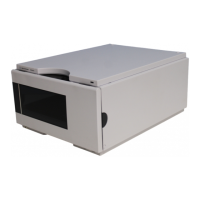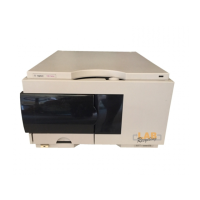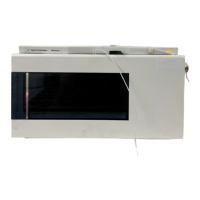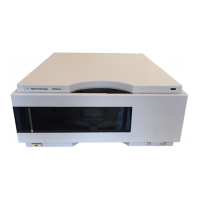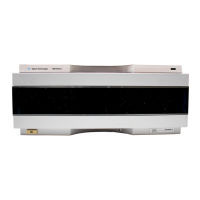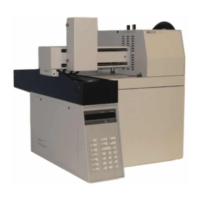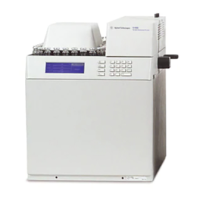204
Introduction to the Autosampler
Sampling Sequence
Sampling Sequence
The movements of the autosamplers components during the sampling
sequence are monitored continuously by the autosamplers processor. The
processor defines specific time windows and mechanical ranges for each
movement. If a specific step of the sampling sequence is not completed
successfully, an error message is generated.
Solvent is bypassed from the autosamplers by the injection valve during
the sampling sequence. The sample vial is selected by a gripper arm from a
static sample rack, or from external vial positions. The gripper arm places
the sample vial below the injection needle. The required volume of sample
is drawn into the sample loop by the metering device. Sample is applied to
the column when the injection valve returns to the mainpass position at
the end of the sampling sequence.
The sampling sequence occurs in the following order:
1 The injection valve switches to the bypass position.
2 The plunger of the metering device moves to the initialization position.
3 The gripper arm moves from the home position, and selects the vial. At
the same time, the needle lifts out of the seat.
4 The gripper arm places the vial below the needle.
5 The needle lowers into the vial.
6 The metering device draws the preset sample volume.
7 The needle lifts out of the vial.
8 If the automated needle wash is selected (see “Using the Automated
Needle Wash” on page 41), the gripper arm replaces the sample vial,
positions the wash vial below the needle, lowers the needle into the vial,
then lifts the needle out of the wash vial.
9 The gripper arm checks the safety flap is in position.
10 The gripper arm replaces the vial, and returns to the home position.
Simultaneously, the needle lowers into the seat.
11 The injection valve switches to the mainpass position.
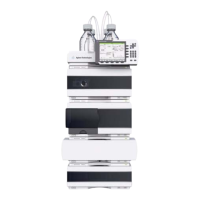
